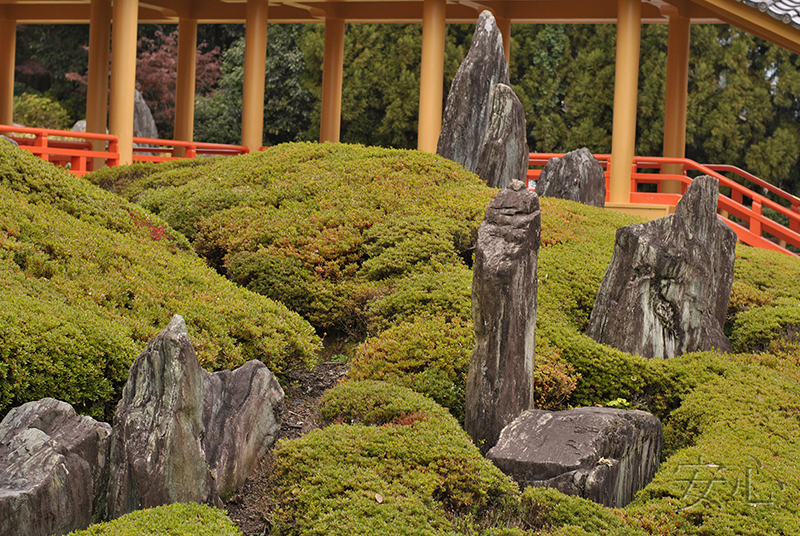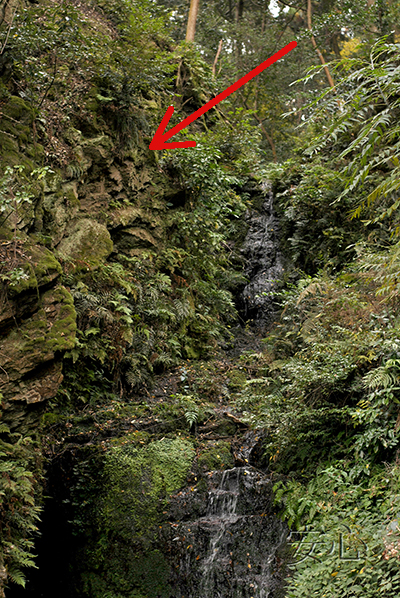
Shofuen garden, Kyoto
I have always been very interested in the gardens of Mirei Shigemori (1896-1975), the great Japanese master, author of the famous review of Japanese gardens in 27 volumes. Through a sophisticated understanding of Japanese and Western art, rethinking classical gardens, using new ideas and materials, Mirei Shigemori created a new type of garden, modern, but at the same time, continuing the traditions of Japanese gardening art. This author also revived an interest to the dry landscape gardens karesansui, which has practically been lost since the late Edo period.
One of Shigemori's most interesting projects is on the grounds of the Matsuo Taisha Shrine. Work on it was contunued from the first half of the 70s until the death of the master. However, then his work was continued by his son and, subsequently, the grandson of Shigemori.
Shofuen Garden is considered one of the best works of Mirei Shigemori, so we decided we must see it. Actually, a garden consist of several gardens, united by one idea and located on the territory of a famous Shinto shrine. Each of them takes us to one of the historical eras of Japan, from ancient times of pagan worship of sacred stones to present times.
The first garden we saw was Kyokusui no Niwa. Kyokusui means "winding stream". During the Heian era, one of the favorite entertainments of the nobility was poetry competitions, when participants put bowls of sake into the water and compose poems while this bowl floats towards them.
The garden was created in a modern manner, we see not an exact copy of the garden with an ancient stream, but its unusual interpretation. On a high hill, enclosed between the buildings of the temple and galleries, stones of stunning beauty are set, surrounded by massives of azaleas.
Such stones, high, with sharp peaks and sharp edges, are characteristic of almost all the gardens of Mirei Shigemori.
Below, at the foot of the hill, there is a winding stream. It flows out of the upper left, passes through seven sharp bends and disappears under the right gallery.
Along the banks and in the water, there are the same stones as on the hill, but their size is much smaller. There are two stone flat bridges in the stream.
If you go up the stairs on the right, you can see the second Mirei Shigemori garden in the upper right side. It is called Joko no Niva (Garden of Ancient Times). Long ago, when there were no shrines, huge stones in the mountains were considered sacred habitats of the kami spirits. They were called iwakura, and the place where they were located was iwasaka. The Joko no Niva Garden represents these sacred groves, and the massive boulders surrounded by low bamboo are the divine stones. There are two giant rocks in the center, the main deities, symbolizing the masculine and feminine principles.
In the upper part, to the left of Joko no Niva, there is another small garden adjacent to the Shintokan building. It was not in the Mirei Shigemori project, but it was made by his son, Kanto, in imitation of the great master's manner. The small space between the buildings is divided into four sections filled with white Shirakawa sand and brown gravel. Long flat stones are arranged as follows: 5 - 2 - 1 - 3.
Before looking for the next garden, we decided to see the waterfall flowing down the side of the mountain. To do this, you need to climb the stairs, passing through the small torii gate.
On the mountain, to the left of the waterfall, they say, you can see the face of a tengu, a mythical character of enormous growth with a red face and a long nose. Try to see out, I marked the place with an arrow ))
Slightly lower, near the Mitarai River, is the Kame-noi source. The water pouring from the mouth of a turtle is considered healing, and they say that if you take it to make sake, it will never go bad.
In general, the Japanese believe that the god Matsuo is the patron saint of sake. Perhaps such a legend appeared due to the fact that Mr. Hata, the founder of the temple (701), was engaged in the manufacture of this drink.
But I digress a little from the topic. We wanted to visit another beautiful garden, Horai no Niva. In fact, there are two gardens. The second belongs to the grandson of Mirei Shigemori, Chisao. It is located in the very corner, with a cursory examination you may not see it. Perhaps I'll start with it.
The garden consists of several steps that symbolize the flow of life. This flow must be overcome in order to approach the heights of mastery. The arrangement of the stones, grouped by 3, 5 and 7, is also not accidental. Two peaks are clearly visible there. They symbolize CHisao's grandfather and father, the very heights of excellence that he will strive for all his life. And the long thin stone in the foreground is the symbol of the raft on which the author is going to go to them.
Such an idea of connection and continuity of generations. ))
The Horai no Niva Garden (Garden of the Island of the Immortals), is a reflection of the Kamakura era. It is a strollen garden with a large pond and a path around it.
It is a reflection of the ancient myth of the island of Horai, where the Immortals lived and which was an unattainable dream for the Chinese and Japanese ancient rulers. This theme that was often used in gardens in the harsh times of the samurai, in the era of incessant wars and battles.
Horai no Niva was designed by Mirei Shigemori, but he did not have time to bring it to life. His son, Kanto Shigemori, was building the garden. They say that if you look at the pond from above, its shape resembles the Crane, another character of Chinese mythology, a symbol of longevity and striving for the heights of knowledge. But I didn't have the chance to look at the garden from above. But the islands floating in the pond reminded me of the wings of cranes: flat, with clear boundaries, covered with light pebbles.
The stones used here look the same as in the garden of the winding stream, and in general, are characteristic of all the work of Mirei Shigemori.
In the northern part, the "waterfall of eternal youth" is hidden. This is probably the only thing that I did not like about this garden. The stones are flawless, but the iron gutter on top of one of them, from which water flows, did not impress me at all.
Well-fed koi carps swim in the pond. There are bags of fish food on the table next to the pond. You can put money in a container and take some food for fish. Moreover, what surprised me is that no one is following this, they rely on the honesty of visitors. We bought one, and the fish instantly sailed to the place where I was standing.
By this time it begun to get dark, and we had to leave. Apparently, we left through the main entrance, through this red torii gate, behind which the gate of the tower is visible. On them you can see 12 hanging bunches of Sakaki branches (there are 13 in leap years), what means a simple form of torii, and also reflect the ancient customs of growing crops as they are.
Tower gate. The merchants have finished their day and are collecting the goods.
So, perhaps, if you come to see the last gardens of the great master Mirei Shigemori, you will first enter the garden of the Island of the Immortals, and then go to the rest. But it doesn't make any difference. Despite the fact that these gardens are connected by one idea, each of them can be seeing separately, independently of the others. By the way, I later regretted that we left without waiting for darkness, because on the islands and along the shore of the pond there were lanterns for evening illumination. Surely at night the garden looks enchantingly beautiful!
Garden Information:
Address: JAPAN, 616-0024 Kyoto, Nishikyo Ward, Arashiyama Miyamachi, 3
Opening hours: from 9 a.m. to 4 p.m.
anshin©2011All rights reserved. When using the materials of the site, reference is obligatory.
Proposals for co-operation, as well as comments and suggestions on the site please send to the address: anshinsad@gmail.comtel: +7 (965) 121-80-60, 10am-20pm



























